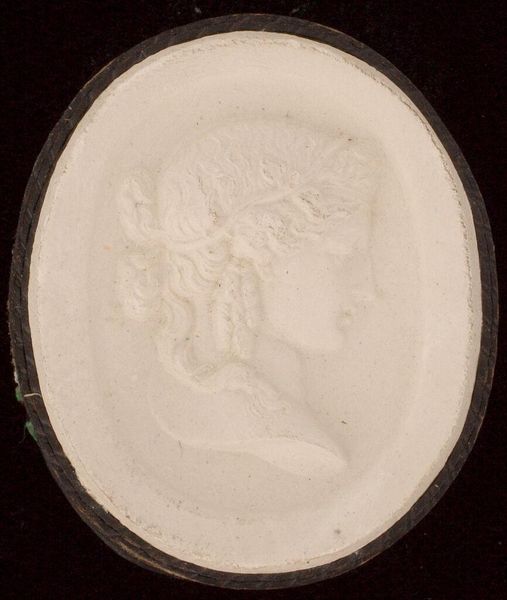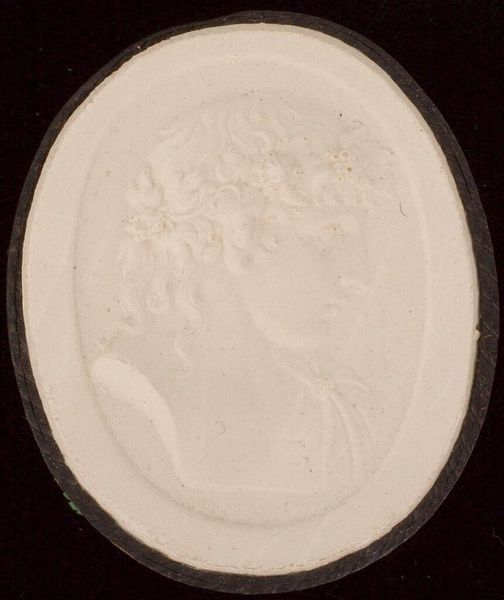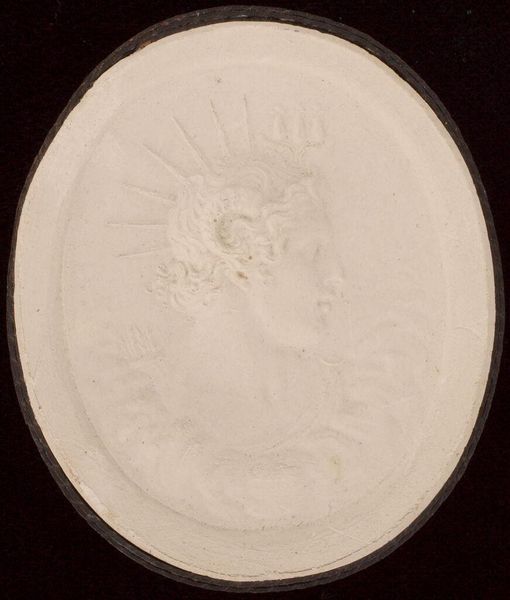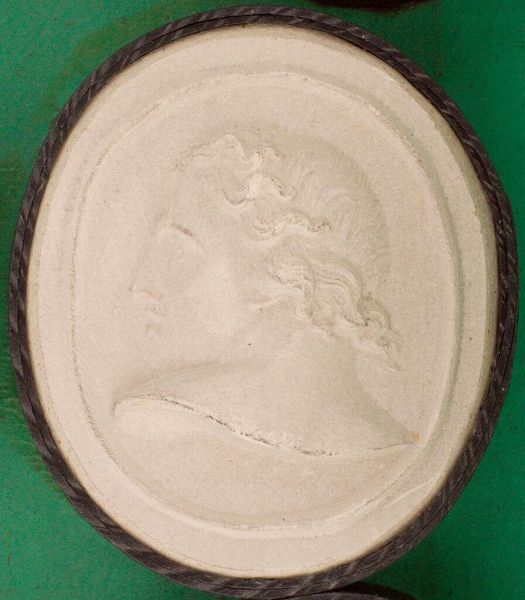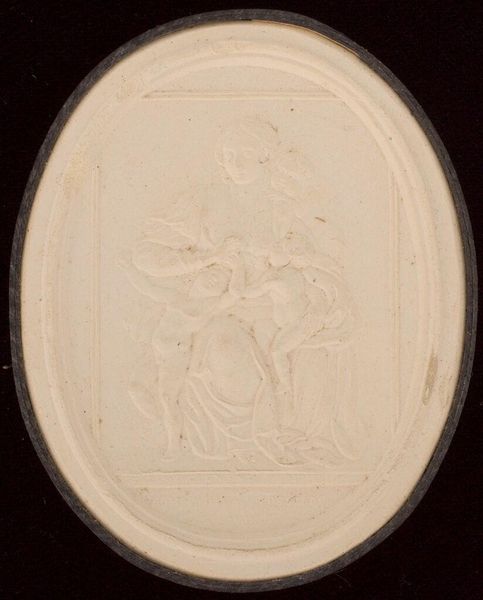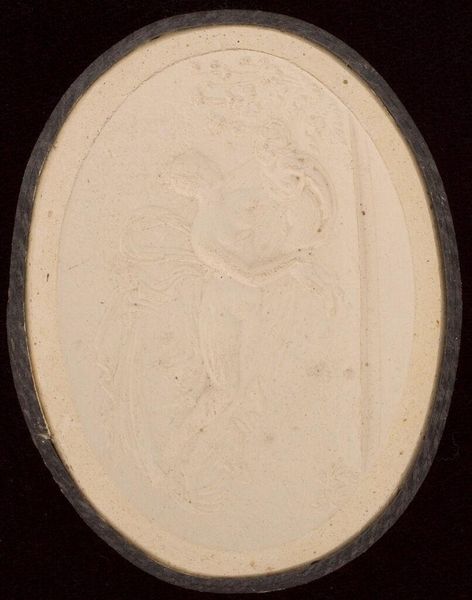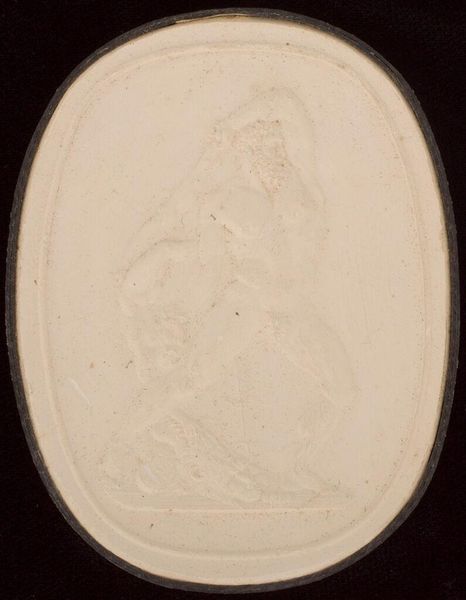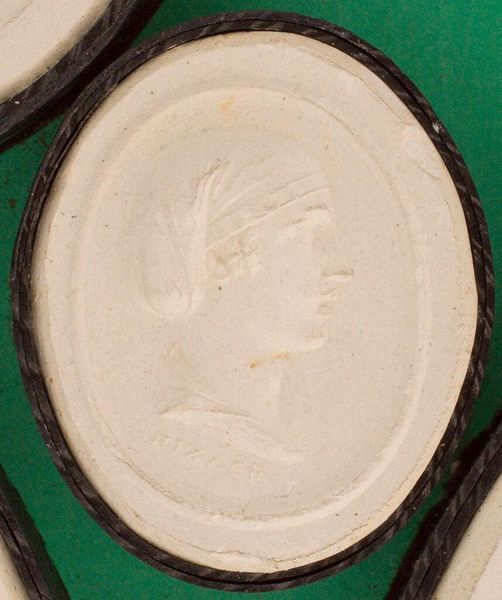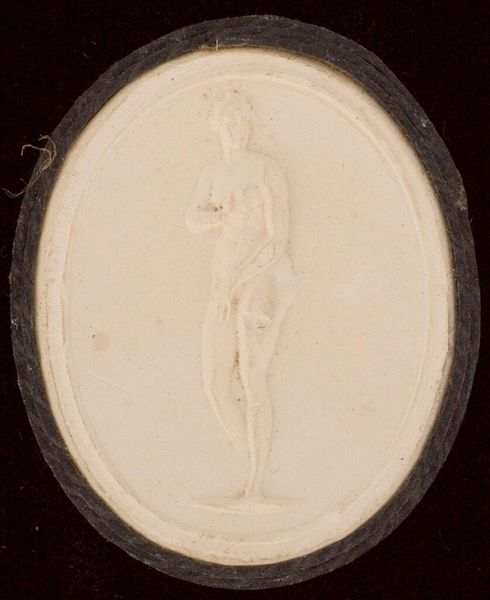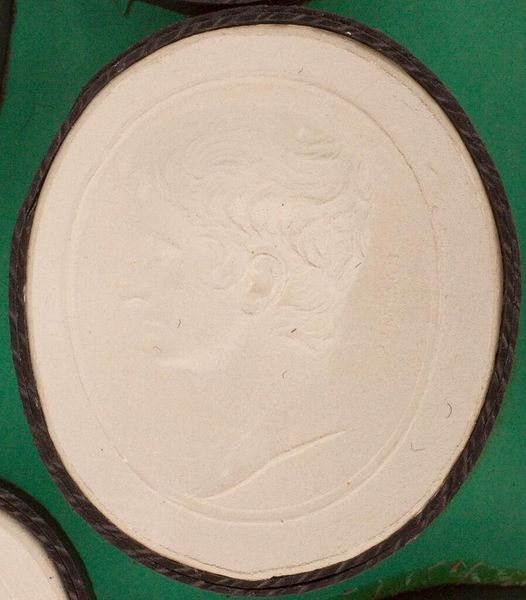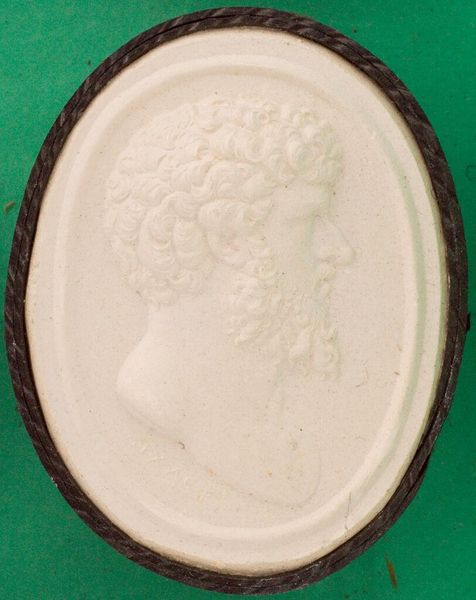
Dimensions: 3.9 x 3.3 x 1 cm (1 9/16 x 1 5/16 x 3/8 in.)
Copyright: CC0 1.0
Curator: Pichler's "Medusa, after antiquity" presents an intriguing case study in the reception and reinterpretation of classical mythology within early 19th-century artistic circles. Editor: Its pale surface and small scale give it an almost ghostly, intimate feeling, as if we're holding a secret or a suppressed story in our hands. Curator: Absolutely. Pichler, working in the Neoclassical tradition, engaged with the myth of Medusa, but filtered it through a particular lens shaped by the artistic conventions and patriarchal structures of his time. Editor: It's fascinating how he softens her features, almost erasing the monstrous aspects of her identity, arguably mirroring the historical tendency to demonize powerful women. Curator: Indeed. By minimizing her monstrous traits, Pichler's interpretation may reflect a desire to control and contain the disruptive potential that Medusa embodies, revealing how art reinforces cultural norms. Editor: Seeing it through this lens, it becomes less about a classical figure and more about the ongoing negotiation of power, gender, and representation. Curator: Exactly. This small piece really encapsulates how classical imagery has been used and continues to be used to construct societal narratives. Editor: It leaves you pondering who gets to control the narrative and whose stories get to be told in these spaces.
Comments
No comments
Be the first to comment and join the conversation on the ultimate creative platform.
